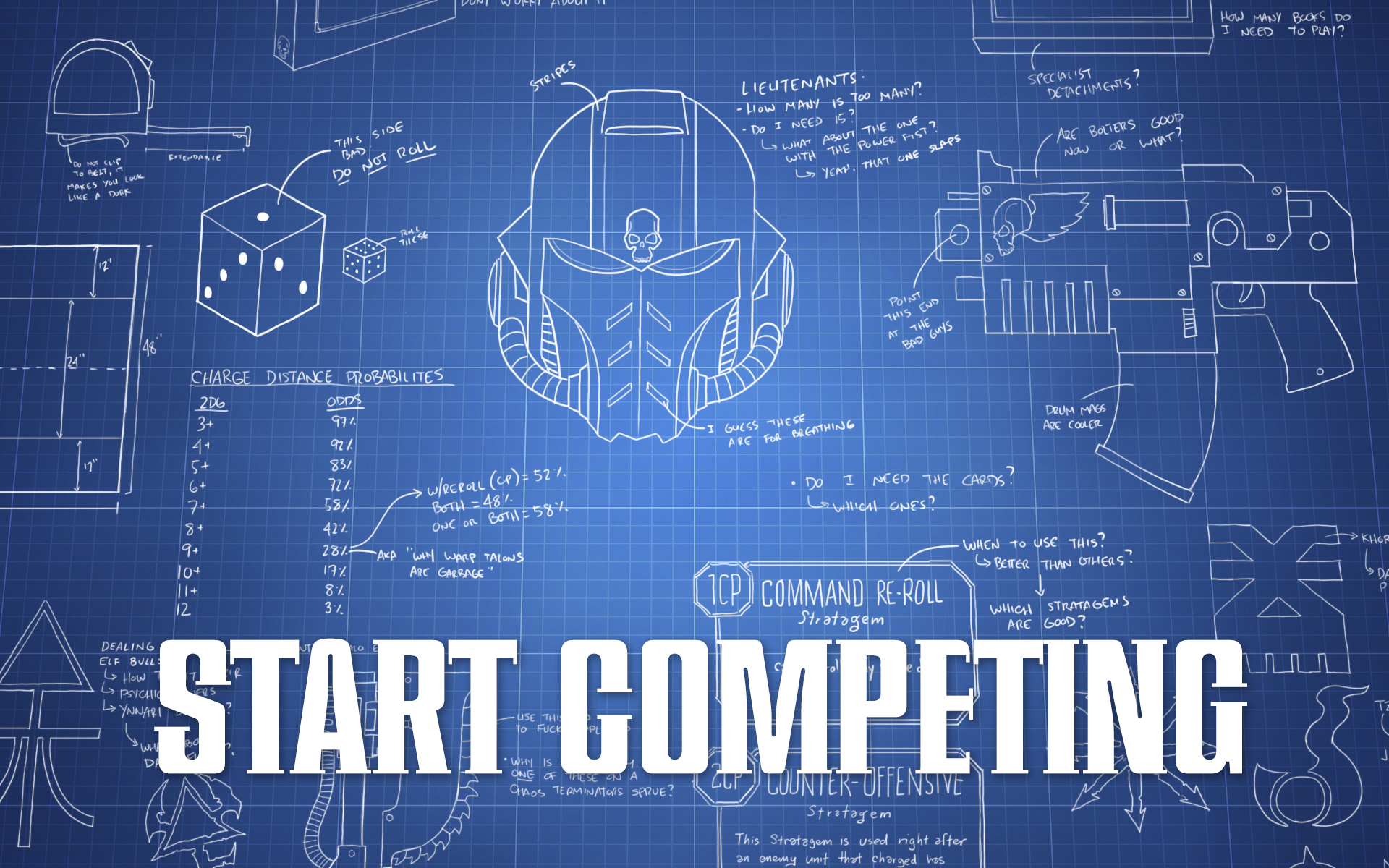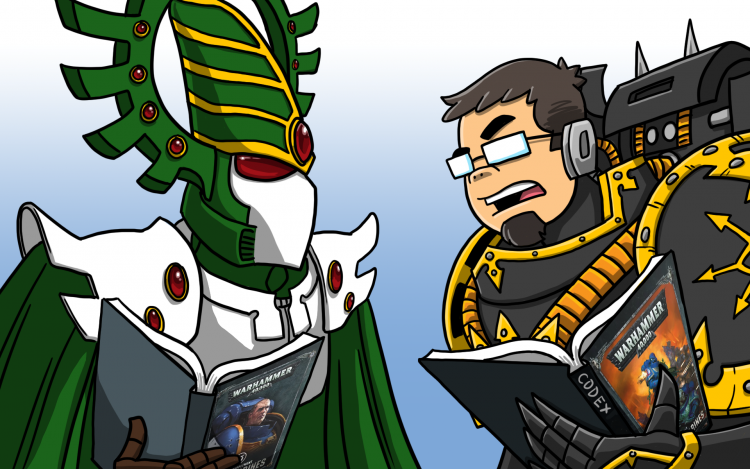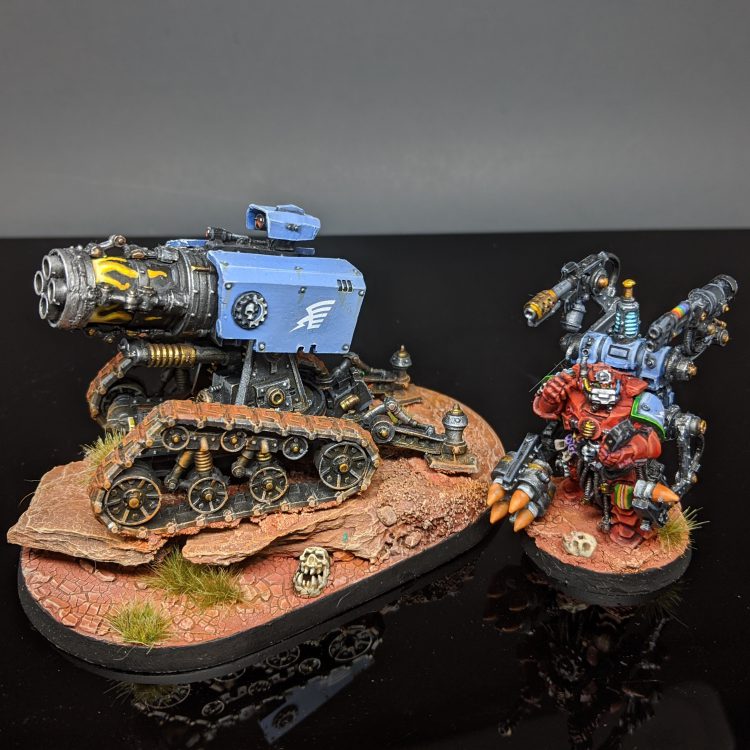As the astute among you may have noticed, 9th Edition is coming (though exactly how soon we don’t yet know). That leaves our plans for Start Competing somewhat up in the air in the interim. Codexes and Psychic Awakenings are staying valid, so there’s still going to be some value in making sure all of our existing ones are up-to-date to give us a good baseline to update from, but given that army construction is one of the things already announced as changing, pouring a lot of time into Chaos and Aeldari soup articles to follow up the one we published on the Imperium has fallen down the priority list considerably.
While we re-plan out what our schedule looks like this week we thought we’d put together a piece on something that’s about to get very topical indeed – how to assess new rules. Psychic Awakening has been adding new rules to existing factions at a healthy clip (and there are still a few to go), but we suspect the start of a new edition is probably going to make that look positively sluggish. Players everywhere are going to be being presented with an avalanche of cool new toys to play with, and will be trying to sort the wheat from the chaff to plan out their new acquisitions. Especially Necron players – boy does that wide shot look exciting, but my wallet has been cowering ever since.
General Considerations
So, presented with a bunch of new options, what can we do to sort out the gems? Luckily, this is something the Goonhammer team has to do all the time – whenever a new release lands we have to quickly make calls on which options from it are going to break out into the metagame, which options have got the legs for casual play, and which ones are probably going to stay on the shelf. An editorial stance I’ve always held is that it’s more interesting to stake a position, justify it and sometimes be wrong rather than hedging on everything, which further sharpens the need to be able to sift through the options quickly, and the meat of this article is going to be a discussion of five of the techniques/criteria I’m using to evaluate each new rule as I go through freshly release books.
Just before diving into the detail here, I want to acknowledge my biggest influence in this area, which are the Hearthstone (an online CCG) set reviews put out by streamer Trump (no not that one), which you can find on his YouTube channel. In his set reviews, he has built a star-grading rubric that aims to rate new cards based on testable predictions as to how likely each is to show up in competitive decks. This acknowledges the important truth that in games like Hearthstone and 40K, context matters – however good a new unit (or in Hearthstone a card) is, it can’t stand entirely on its own – it needs a viable army to back it up.
The most common cause for an over-hyped new unit or ability not seeing use on the table is there turning out to be no list emerges that really wants it. Most evaluations also, to some degree, relative. Units are competing for you to spend points on them, while warlord traits and relics are vying for a limited number of slots per game, so whether similar, better options exist makes a big difference to how important a new option is. The upshot of this is that sometimes a powerful-looking new tool still doesn’t break through or, less frequently, something that looks weaker on paper makes a competitive splash because it turns out to be the final piece in the puzzle that makes a new strategy viable. These can be some of the hardest things to spot up front, and looking back on ratings or evaluations we got wrong is a really useful way to improve at it over time. It’s also the other reason I love the Trump reviews so much – each time a new set is about to release, he does a video (the catchily named Trump Reviews Trump Reviews) where he checks his grades from the previous set against metagame data and analyses why he got it wrong on cards that substantially diverged from his predictions.
Finding a way to do similar retrospectives for 40K is something I’m looking at with renewed interest as 9th approaches, but in the meantime for each of the techniques I talk about I’ll also cover ways in which it can go wrong, including some examples where I’ve had some misses in the past. On with the show!
Five Assessment Techniques
1. Comparisons to Baselines
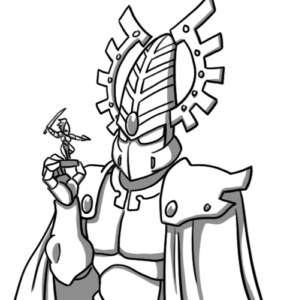
What Does it Mean?
Put simply – consider how a new option compares to similar existing ones that are competitively relevant, and whether it has any characteristics that have proven consistently strong or weak in past incarnations. As discussed above, no new rule exists in a vacuum, so you almost always have some baselines you can compare something to. 8th Edition provided an incredibly powerful tool for this in the form of the indexes, giving every unit rules and a cost on day one. That helped to quickly establish some benchmarks and ground rules for what comprised “good” rules competitively, and that means every new release since has had things you can compare it to. It also means that there’s an evolving competitive framework where you can observe repeating trends that you can use to flag units that might be good or bad. Examples of this in 8th edition include mid-strength, high rate of fire weapons with flat damage 2 being consistently very good, and abilities that modify the opponent’s leadership being consistently pretty bad..
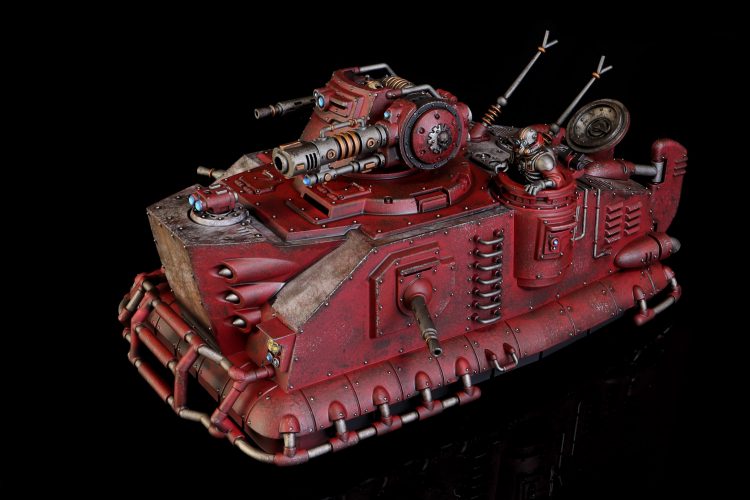
Credit: Pendulin
This is easiest to use when looking at new units for an existing faction. An example of this was when the Skorpius Disintegrator launched – you could break down its offensive output mathematically (as we did) and demonstrate that it was simply more cost efficient than existing options in at least some circumstances, a sure sign of a unit worth looking at. Other kinds of effect can be approached mathematically as well – across the Space Marine supplements, any melee-boosting warlord trait that wants a place in a list needs to be able to demonstrate that they’re superior to The Imperium’s Sword, a very potent buff from the core book. You won’t always have a direct comparison within a faction, but you might be able to find examples of units performing similar roles in other factions that you can run the numbers against. You have to allow for differing access to buffs and abilities, but a unit’s baseline effectiveness being significantly skewed in either direction compared to equivalents is almost certainly relevant information.
Finally, checking whether a new rule fits into any “known” good or bad patterns can be a very quick way to sift through a large infusion of new rules to at least sort things into “maybe” and “probably not” buckets. If I see a unit has a 6-shot, S7 AP-2 D2 weapon, then my question from there on out is “is there any reason this is not good?”. Conversely, if I see a warlord trait that makes the warlord more powerful as they kill enemy characters, I’ll immediately be asking myself “why is this one good when almost all previous ones have been bad?”. By itself this doesn’t always get you the full picture of what a unit can do, but it’s a good way of teeing up units to subject them to some of the other tests here.
When it Works Well
Comparison based evaluations have two big strengths:
- They’re a great first step when you’re processing a big batch of new rules that don’t break new ground, as they provide a fast sift for what needs closer attention as discussed above. The best example of this is the release of the annual Chapter Approved balance update, where you can quickly assess which changes are of sufficient magnitude to matter.
- They rarely give false positives. It’s relatively unusual for a rule to flag as good on this basis and not bear out to be at least “OK”, because comparing it to known-good benchmarks provides built-in verification that this is something that’s actually worth having. The risk does rise as you start comparing cross-faction, as we’ll discuss in the last test.
What can go Wrong?
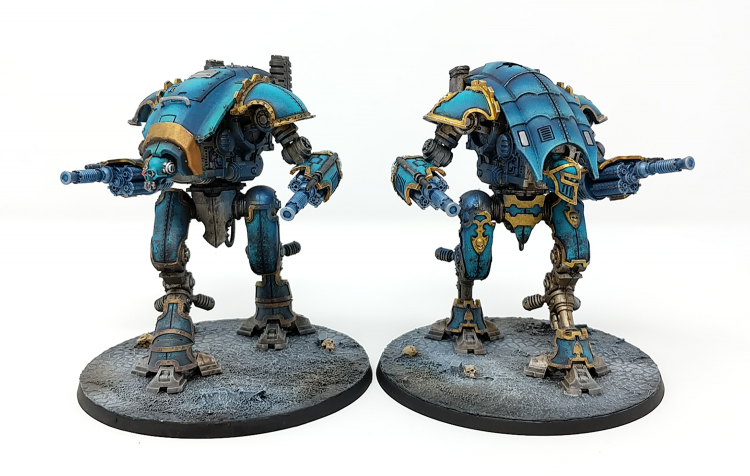
These evaluations are very much a first step, and have a number of weaknesses that need to be dealt with using the other tools:
- They don’t cover completely new abilities. We occasionally get a new rule that’s nothing like anything we’ve seen before, and that needs to be looked at separately.
- They require a stable-ish framework to operate in. I expect the magnitude of core rules changes in 9th to be sufficient that it takes a while to properly re-establish the baselines I use to judge rules, making this less useful in whatever initial flurry of updates we get.
- They can give false negatives. Seeing that an option is only about 80% as effective as another on baseline, has “known bad” characteristics, or is competing with a “known good” option might lead you to write it off, but it could turn out that a more thorough exploration shows that they’re better.
I’ve missed on the last point a few times. When evaluating War Dog Moiraxes for our Forge World Knight hot take, my snap judgemnent was to be keen on the Volkite option over the Lightning Locks, as they were mid-strength D2 weapons at a time when those were king. However, the maths turned out to favour the Lightning Locks against far more targets than I’d thought once people dug in to the numbers, pushing the Locks ahead – and the reason I didn’t do that maths while getting the hot take out was because the Volkite weapons looked good enough to me that I didn’t properly test the assumption.
2. New Capabilities
What Does it Mean?
New rules often grant armies or units the ability to do something they couldn’t before. I’ve talked recently about the roles units can play on the battlefield and army level capabilities, and one of the most important things to be on the lookout for when reviewing new rules are ways in which they broaden what a faction can achieve. Not every faction has units that can effectively perform every role, so if a new release suddenly opens up capabilities (either with a new datasheet or new abilities for an existing one) or substantially amplifies existing ones that can have a very big impact on army construction. New units or abilities might also close a faction’s weaknesses against certain types of targets, allowing them to build a list with fewer strategic vulnerabilities. Finally, new abilities that can layer on top of existing units can change what roles those units can meaningfully play, or grant a faction access to specific effects at a lower price point. Both of these can make it worth looking again at datasheets that had previously been written off.
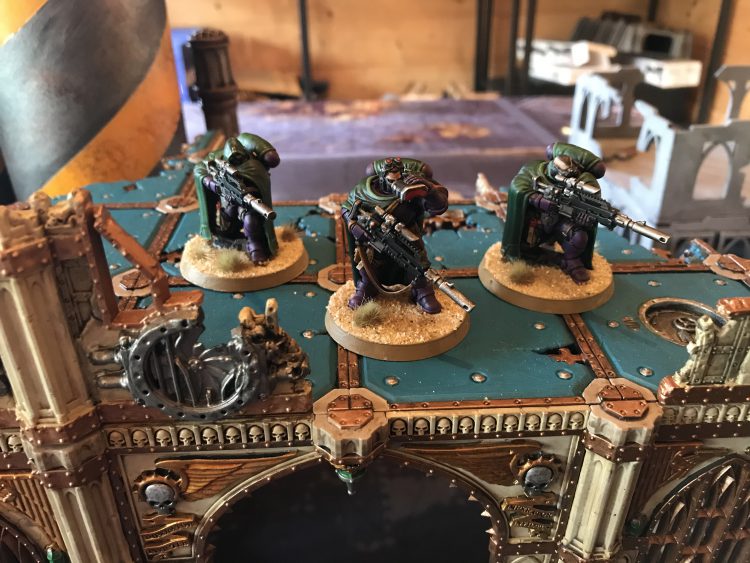
In terms of new or updated units, a good recent example is the capabilitiy added by Codex Marines to unleash an absolute torrent of long-ranged anti-infantry firepower. Between upgrades and discounts to Whirlwinds, Thunderfire Cannons, assault cannon planes and Eliminators, all frequently toting lots of re-rolls and near impossible to hide from, the army could suddenly go through hordes like a hot knife, and table Knight armies in a few turns by sheer weight of fire. An elite army that struggled with being overwhelmed could suddenly body horde lists without breaking a sweat, and the metagame twisted around it. A more prosaic one was that for dedicated Custodes players, Sagittarum Custodians moving to Troops in the second round of Forge World rules was a big deal, because it gave them a Battalion filler that could operate at range while holding objectives, a big gap previously.
For new options on existing units, the recent Harlequin rules stand out. Pivotal roles let Death Jesters pick up several new utility abilities, new relics let Troupe Masters perform in soup, and new defensive abilities and stratagems gave all-Harlequin armies the tools they needed to compete with their core units rather than skewing towards bikes.
When it Works Well
Moreso than the others here, assessing the impacts of new capabilities is something that works best when you have a really deep knowledge of an army. This is because you need to understand not just what it’s good at and which units are great, but where the weaknesses lie and which units are sitting at a C+ just waiting for the right boost to get them up into a solid B. Trying to cultivate this kind of understanding is part of why I try and pick out interesting lists as well as just the most powerful ones when writing review articles, as it helps me keep on top of what tier 2 or 3 strategies people are nearly managing to break through with so that I’ve got a better chance of spotting an effect that will push them over the top. That helped a lot with reviewing the Ork Psychic Awakening – having looked at a curveball lists doing well with buggies last year, I knew which ones I wanted to take the closest look at coming out of it.

It’s also definitely easier if you’ve got a good, broad knowledge of the game in general. For this technique we’re talking about armies gaining access to capabilities that they didn’t have previously, but aren’t totally new to the game. This is basically a more “qualitative” version of comparing to baselines – there’s a whole laundry list of specific effects that are almost always a massive net boon to gain access to, such as double fight and psychic shutdown stratagems. Understanding what kind of effects have been consistently used to strong effect in competitive play will help you spot them when they come up for a new faction, and in some cases you can go a bit deeper and build up an understanding of what a good “version” of an effect looks like, and what kind of riders or drawbacks might make it less appealing or way better. One of the reasons the Raven Guard’s Master of Ambush ability got one of my begrudging A+ grades out of the gate was that it was providing an effect we’d seen perform before (redeploys) but vastly, vastly better when used on turn one than any previous flavour – a massive alarm bell.
If you don’t have that body of existing knowledge to draw on, then the shortcut on seeing a new option is to actively go looking for it in other books, then check up specifically whether the existing versions are seeing any play. It isn’t perfect, and you might get unlucky and find a version that isn’t representative of the wider quality, but there’s a reason that my writing station has a giant, teetering pile of codexes next to it at all times – there’s almost always some sort of existing context you can draw on.
What can go Wrong?
First up, the obvious one – this doesn’t account for completely new abilities that we haven’t seen in the game at all before. That’s priced in, however, and we’ll talk about how to assess those in a second.
The real risk here are twofold:
- You overvalue options that provide novelty over ones that provide efficiency boosts.
- You misjudge whether an army will meaningfully benefit from a new option.
For both of these I can pull out particularly shameful examples of past misses, looking back at my Craftworld’s Psychic Awakening review. On the first front, massively undervaluing Masterful Shots. I’d picked up that Expert Crafters was great, but was locked into the pre-PA Eldar mindset of needing a defensive boost out of your trait, so assumed Masters of Concealment would be the combo with it. It turned out that no amount of defensive boost could make an Eldar army stand up to Marine shooting, whereas an efficiency boost to your damage output could sometimes let you blast them off the board fast enough, making the Masterful Shots option superior.
The other miss from this review was undervaluing Hunters of Ancient Relics. It’s a bit more forgivable because the main beneficiary (Spears) got a big cut in Chapter Approved down the line that pushed it over the top – but I had considered the combo with Spears when reviewing the book, I just didn’t think they needed the help. It turns out that in practice, an extra attack per model meaningfully increases how independently Spears can operate and how reliably they can delete key targets, making it a valuable option.
3. Novel Effects
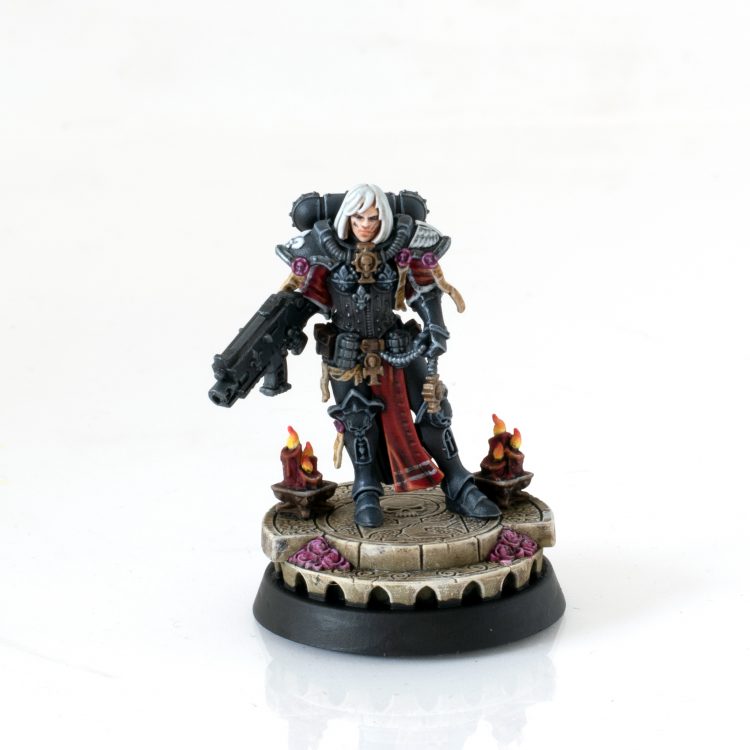
What Does it Mean?
Something new. Games Workshop’s designers are endlessly inventive, and frequently manage to come up with mechanics that are completely new to the game. Recent examples of this are Acts of Faith from the Adepta Sororitas, and Ghazghkull Thraka’s ability to take a maximum of four wounds in a phase, both of which play with game mechanics in ways not previously seen. Sometimes they also break limits that have otherwise been in place, such as allowing turn 1 drop pod deployment in new Marines.
The two techniques we’ve talked about thus far obviously can’t fully address this situation, as both rely on comparisons to existing rules and experience to judge how new things stack up. However, we also can’t analyse them completely devoid of the context of the wider game, so what can we do about it?
Well, obviously the first answer is to test it on the table. 40K on the board is a pretty dynamic game with lots of interacting parts, so the absolute best way to learn how something totally new will interact with them is to throw it into an army and play some games with an open mind, keeping an eye out for places where it’s letting you achieve something notably different than before.
Playing games isn’t always a luxury that’s open to us, however, especially if we’re trying to turn around a review of a model that hasn’t even come out yet, so it’s important to have methods to try and evaluate novel effects in the abstract. The best way I find to do this is to look for a basis for comparison from a different direction.
Rather than thinking about how an effect works, think about what results it lets you achieve on the table. What’s the best thing you can think of to do with it? What would an ideal scenario to ruin an opponent’s day with it look like? What would you have to do to achieve similar results? Does it stack up?
Acts of Faith are a great example of this. The breadth of things you can do with them is considerable, and the exact mechanism largely unique, but most of the actual results you can achieve with boil down to being slightly different versions of existing tools. First up, you can use it to buff attacks, spending a Miracle dice to fix the role for one step of the process for a single shot/swing. This is, ultimately, not fantastic. While the certainty is nice, because it only applies to a single attack it’s going to be vastly less impactful on your overall output than granting unit-wide re-rolls or +1s to hit/wound – both of which are reasonably common abilities that can be accessed in a number of ways across the game. The only place in the attack sequence it has high value is on a d6 damage roll – and that makes sense when you think about it, as any experienced player will probably have thrown a CP re-roll at a d6 damage roll in the past. That suggests that an Act of Faith used here can act as a slightly better CP re-roll – which suddenly sounds like something we’re interested in.
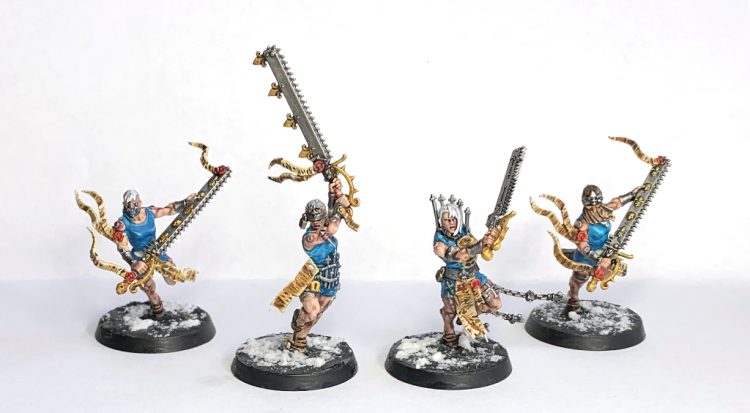
Moving on to other things we can do with it, automatically advancing a set distance is something that other factions can straight up do for 1 CP, so it’s quite easy to value – it’s good, especially on units that can advance and charge. Speaking of charges, that’s where it starts to look really powerful. There’s very few things out there that make a charge certain, but both Blood Angels and Genestealer Cults have ways of stacking boosts to get the odds of success into the 90%+ range, so while it’s imperfect, it’s reasonable to compare “extremely likely charge” to “100% certain charge”. As soon as we do that, we can correctly assess that this usage is really good – BA and GSC both pour a tonne of resources into setting up their charges, while Sororitas can just make them as long as they’ve built up a suitable dice pool. As long as there are units which want to make charges (which there are) we can be confident that using the ability in this way is good.
When it Works Well
Ultimately, for analysing this kind of rules without playing a game, the better the results comparisons you can come up with are the better the read you’ll be able to get on the effect. If you’re struggling with that, remember that in competitive 40K you ultimately have three fundamental routes to victory – kill your opponent’s stuff, hold objectives, and keep your stuff alive to keep doing the first two. Work out how the army the new option applies to is normally try to do those things, then see if it looks any different after you add it in. Alternatively, look at the way the army is already aiming to achieve certain results – does the new option do it better?
If that’s still not working, or the ability is just so unique that it’s hard to picture, try coming up with some game situations and dropping it in. This is what I ended up doing to try and get my read on new Ghazghkull – I tried to picture the impact he would have on some game states if I dropped him into them. My conclusion from that, and why I ended up a bit higher on him than many commentators, was that when I did that I felt there were enough situations where his time-limited immunity warped the game around him that he was worth serious consideration. Time will, of course, still tell on that one.
Finally – talk to people. Chat through games. Propose how you would try to use a new toy to ruin their day then ask how they’d fight back.
What can go Wrong?
The basic risks here are:
- You build an overly sunny view of a new effect by considering it in too much of an idealised way.
- You miss the more subtle impacts a new effect can have.
The first one comes down to trying to be realistic, considering the opportunity costs of using a new option (discussed in a bit), and making sure you’re considering what avenues an opponent would have to push back against your fancy new plans as well. Continuing the above example, Ghazghkull could still end up being too clunky to use on the tabletop once tournaments resume and people try him in earnest.
The second one is, ultimately, a cost of trying to do this without real play experience. Here we can continue with our other example – Acts of Faith. A much more subtle use of these that’s emerged is using them to auto-pass 6+ invulnerable saves in a situation where a troop transport has been wounded by a high damage weapon. That’s vastly harder to spot until you see it play out, because manipulating/modifying invulnerable saves is (mercifully) far rarer than doing so for hits and wounds – and throwing a CP re-roll after a 6++ is a rare act of desperation. There also aren’t that many “spiky” defensive stratagems – there are plenty that provide a phase-long boost, many quite good, but even they don’t quite directly compare – the flexibility for when you can choose to use the AoF gives you a level of control like nothing else. If you zoom out they do have comparable results, being “make my vehicle more likely/certain to survive the phase”, but here that comparison doesn’t tell the whole story of how much extra value comes from the timing and certainty of the AoF, which is what makes it hard to spot on a first pass.
4. Exploring the Extremes
What Does it Mean?
The first three techniques give us the tools to get an initial read on most things, while the last two help us to go a bit deeper. Exploring the extremes is aimed at finding ways you can push a new rule to its limits, asking what the most you can achieve with it is. This is important if you want to look like a genius online (and really, why else would I spend so much time writing on this website) because this is often where the really, really broken stuff from a new book comes out. If there has been a consistent flaw in Games Workshop’s rules writing this edition (and one there are promising signs of improvement on for the next) it’s been paying inadequate attention to the extremes of what can be achieved by really leaning into a new effect.
The Space Marine Codex provides great examples of the two main ways to use this technique. The first is to always, when reading a rule that looks potent, think “what’s the most powerful unit I could use this with”. In the Marine book, for any effect that worked on INFANTRY the answer tended to be “6 decked out Assault Centurions”, and it quickly emerged that a decent number of effects that were balanced when used on Intercessors were…not so much when dropped on the drill team. Most notoriously, the aforementioned Master of Ambush had to have a specific “no Centurions” clause added in as part of the big balance changes in February, and Raven Guard Centurions is still a top tier strategy after that because of how busted even Strike from the Shadows is with them.
The second method is to consider “what if I built my entire army around this?”. That was the calculus behind the notorious “whoops all heavy weapons” armies that were the second main casualty of the Marine nerfs, but it’s been seen time and again, whether it be covering the table in a sufficient carpet of plaguebearers to gum up the entire game, throwing 200 Ork Boyz at the enemy or perhaps the most hated of all 8th Edition lists, Eldar flyer spam. Plenty of things that are balanced in moderation prove to be broken when used en-masse, and evaluating some “all-in” builds is usually worth your time.
The final, more niche thing you need to do here is check whether a new release has changed any “break points” in the constraints an army operates under. This overlaps a bit with looking for new capabilities, and usually covers cross checking whether a new release has changed the easiest or cheapest option a faction has to achieve something. That might be something obvious like the cheapest Battalion for an army coming in at a lower price than before, but can operate at a larger scale. One of the reasons Chaos Knights have stayed a bit more competitive than their Imperial counterparts is that the dual Thermal Iconoclast build lets you get three big Knights that can kill a wide variety of targets into your list much more cheaply than the loyalists can, allowing you to bring more supporting tools to go with them. Being able to push that minimum price down turns out to be one of the enduringly relevant outcomes from the Chaos Knight book.
When it Works Well
This is obviously much easier to do if you have a good handle on what the best threats of each kind (ranged, push, reactive) in each faction are, as they’re definitely the first place to look for this kind of interaction. It also helps to have an idea of what the heftiest units are that have each common keyword (e.g. INFANTRY, VEHICLE) even if they’re not currently competitive. There’s nothing like access to a new ability, especially anything that looks like a mobility option, to take something that’s brutal but too clunky for it’s cost through to being a killing machine. Centurions are actually an example of this, because without the mobility options of Scars and Raven Guard they came across as deadly but impractical on first review of the new Codex – but layering those options on top made them nightmare.
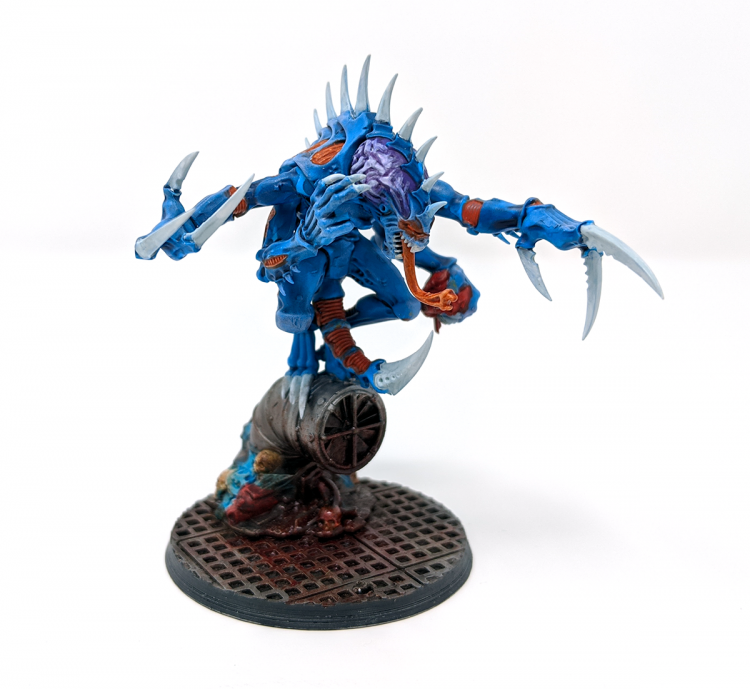
You don’t actually need to go in with prior knowledge to make this one work though – you can just sit down with your codex (and I guess your FW Index, ugh) and skim through to find whatever the biggest, nastiest thing you could combo a new toy with is. Part of exploring the extremes is looking for ways to overturn the existing consensus of what’s best, and there’s really no substitute for slamming out a few lists that try out a concept, no matter how galaxy brained it might seem on paper. A good example of this paying off was people going in on Mental Onslaught out of the Genestealer Cult codex. The combo took a reasonable amount of setup to pull off, meaning some people wrote it off as a gimmick, but it turned out that the payoff of “insta-kill a Knight” was so very extreme that it proved worth including, and had to be quickly nerfed.
As an aside, this sort of consideration is one of the reasons I’ve been a consistent critic of the inclusion of Forge World units in competitive play. The balance of units in the FW index books is all over the place, and few if any are overpowered in the abstract, but they have frequently provided a source of units that allow for a much more extreme application of new rules than is available in the main codexes. The Leviathan and Chaplain Dreadnought are notable recent culprits, and an option in the Tau Psychic Awakening had to be immediately errataed to stop it being abused with Forge World units – none of which is an especially healthy sign. I strongly suspect that part of what we’ll see from the mainlining of the books in 9th edition is some of the more extreme units being brought more in line with the limits of what you can do with the Codexes.
What can go Wrong?
Getting this right is a balancing act, and while keeping an open mind you have to maintain a healthy skepticism as well. Going all in on a strategy will naturally bring some costs, and taking account of those is important enough that it gets its own section.
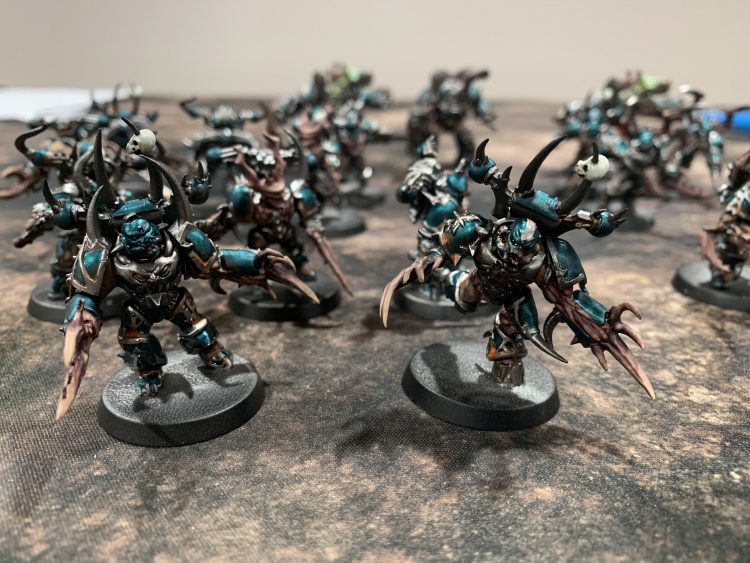
Outside that, the absolute biggest risk here is overkill. There comes a point in setting up a ludicrous death star of a unit where adding more killing power just doesn’t help. You see this particularly with melee units, where a lot of the craziest damage dealers live – there comes a point of buffing one of these up where adding more boosts just isn’t useful, because they can only engage a certain number of things at once, and will already detonate anything they touch. You see this with the drift from the Nurgle build of the Possessed bomb over to the Slaanesh one – the damage ceiling is a bit lower, but trading some of that in for more mobility is proving to be a worthwhile play. In a similar way, for many of the very customisable Marine units that can all take power fists/thunder hammers you don’t actually need them on the whole squad before you can kick in any realistic target, and are better spending the points elsewhere. Going all-in can sometimes be the play, but make sure you’re not going too far down a rabbit hole.
I don’t immediately have an example of this to hand from my reviews, but honestly that’s probably something to work on in its own right – I’ll make sure to take more of a punt on the odd thing in the future!
5. Opportunity & Setup Costs
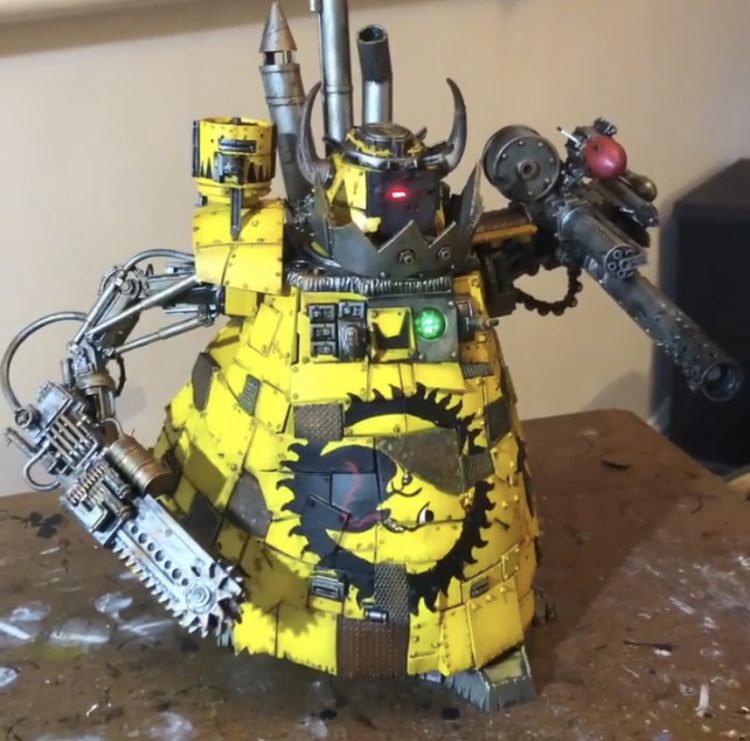
What Does it Mean?
After all the fun of getting psyched up for new options, the last thing you need to do is try to turn down your hype a bit and double check that you aren’t overvaluing something. Pretty much everything you do in 40K comes with a cost, whether in terms of a raw down-payment of points or CP, other units or abilities you need to include to make things line up, or in the alternative choices you don’t now get to make (the latter especially relevant for Warlord traits and Relics). Doing a final check that you’ve thought through the real costs of what you’re planning, and also considered any particular weak points that an opponent might exploit, is a vital final step in carrying out your evaluations.
There are all sorts of questions you can ask yourself here, but key ones include:
- What additional support units do I need to include to make my new toy actually work?
- Does the death of one key unit pull this plan to pieces?
- Am I relying on a coin-flip dice roll?
- Do I actually have a way to get my unit into the fight?
- Will I run out of CP to power this by turn 2?
- Is there an alternative that has fewer costs?
- If I’ve skewed my army for one kind of target, do others rip me to shreds?
Make sure you’re thinking about these somewhere between deciding an idea is the next big thing and spending $300 on new models.
When it Works Well
Here there’s no substitute for making a list. If you think that some new rule looks really good then you need to find an army list it fits in. Sometimes you’ll pull the list together and still think it looks amazing – great! Other times, however, you’ll suddenly find that you need three extra characters, you’ve run out of detachment slots and your army has 2 CP left after you’ve bought all your relics, and maaaybe needs to go back to the drawing board.

As someone who has repeatedly tried to make it work, I can cheerfully inform you that it’s this kind of pile up that’s holding the Wraithknight back from being truly good despite repeated buffs. The tools to make them good are kind of all there, but getting them together in a list is a complete pain – you want lots of CP, but you also need them to be in a Wraithhost detachment with a Spiritseer, so that means a supreme command. That means if you want a Craftworlds battalion as well, you’re running at least 5 Craftworlds HQs – but the cheapest of those (Warlocks) don’t combo with the Wraithknight at all, and are much less good in lists spending points on the Knight than they would be elsewhere. You end up skewed towards herohammer, which can be OK but a lot of modern lists can deal with. Oh, also, your key defensive trick that you’re paying all this for doesn’t work if you go second against a powerful shooting list. Have fun!
Now obviously, playing with a Wraithknight is still great fun, and I’m reasonably sure my more recent builds of it are as optimised as can be, so I definitely endorse experimentation to try and get past these challenges. Just make sure you’re keeping in mind that at some point after repeated failures to really find a home for something that sounds great on paper, it might be time to put them down.
Sometimes it doesn’t even need to be that extreme – an option might be good, but others exist that are just way easier to use. This has been the repeated fate of the Fire Prism since the big point cut Night Spinners got in CA2018. Fire Prisms have been discounted again since, and sometimes the metagame looks friendly to them, but time and time again the fact that Night Spinners are just way easier to slam into a list and have look after themselves, without worrying about LOS or one getting blown away, means they take the list slots.
Really, truly, this comes down to a single core thing – are you making your life more difficult than it needs to be? If so, make sure you have a really good reason why before proceeding.
What can go Wrong?
The whole point of applying these tests is to stop you going off on wild flights of fancy, but the risk is that you can end up turning them into hard and fast rules and and up discarding things too easily. Asking yourself what can go wrong with a strategy is important, but so is following through to the next question – is there a way you can mitigate those risks. This was one of the reasons I found at least some of the Ghazghkull naysaying unconvincing – a repeating theme was concerns about him getting tarpitted by enemy chaff and like, come on people. Ork Boyz will brutally murder tarpit chaff more efficiently than almost anything else in the game, and Ghaz is gonna have some Boyz with him, quite likely surrounding him sufficiently to make pulling this hypothetical counter off almost impossible.
Sometimes, you can also write something off in its obvious flashy role and find that it’s good enough just being quietly efficient somewhere else. For our example here, I’ll return to Assault Centurions. I (and many others) largely skipped over these in non-Scars/Raven Guard Marines because of how slow they were. They’ve certainly seen the most use in those chapters, acting as sucker punch units core to the game plan, but they’ve quietely made modest showings as smaller units in other lists. It turns out that Assault Centurions are so game-warpingly overtuned that it can be worth running a mid-sized squad in an Iron Hands list to just gradually advance up the board and sit mid-field looking menacing. Pigeon-holing Centurions as a unit only for bullshit combos was what prevented us from spotting this initially, and a good example of where being over-skeptical can go wrong.
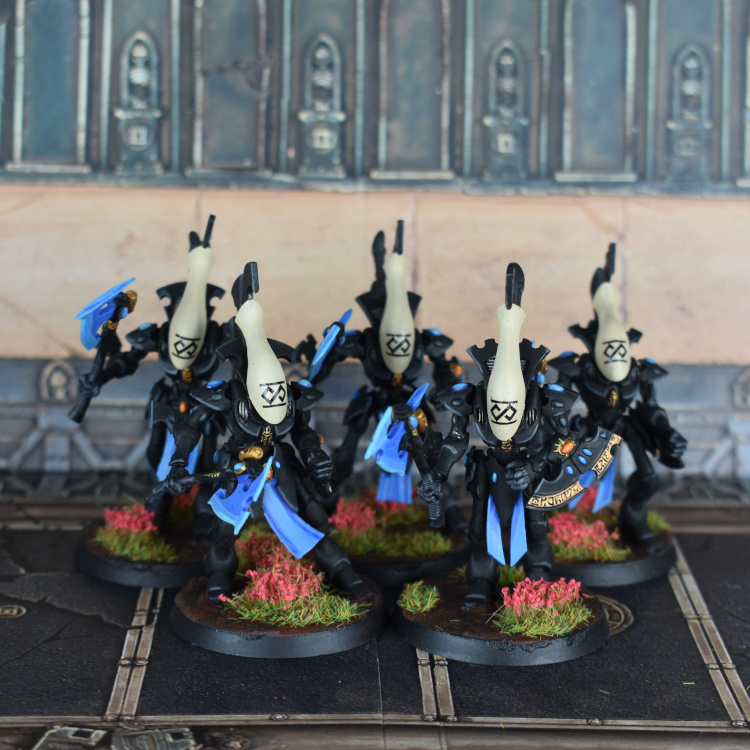
Finally, you also need to be ready for the facts to change, and not to write something off forever. The recent discount to axe/shield Wraithblades suddenly makes them look way more appealing, because it removes one failure point from the process of setting up a squad with a decent invuln.
Wrap Up
I hope that’s been interesting. This is an area where everyone’s methods are slightly different, so this is necessarily tuned to the way I like to look at things, but hopefully it provides some food for thought for when you get a chance to unwrap the remaining Psychic Awakenings and 9th Edition. If you have any comments, questions and suggestions, or want to yell at me about Forge World again, you can hit us up at contact@goonhammer.com.
